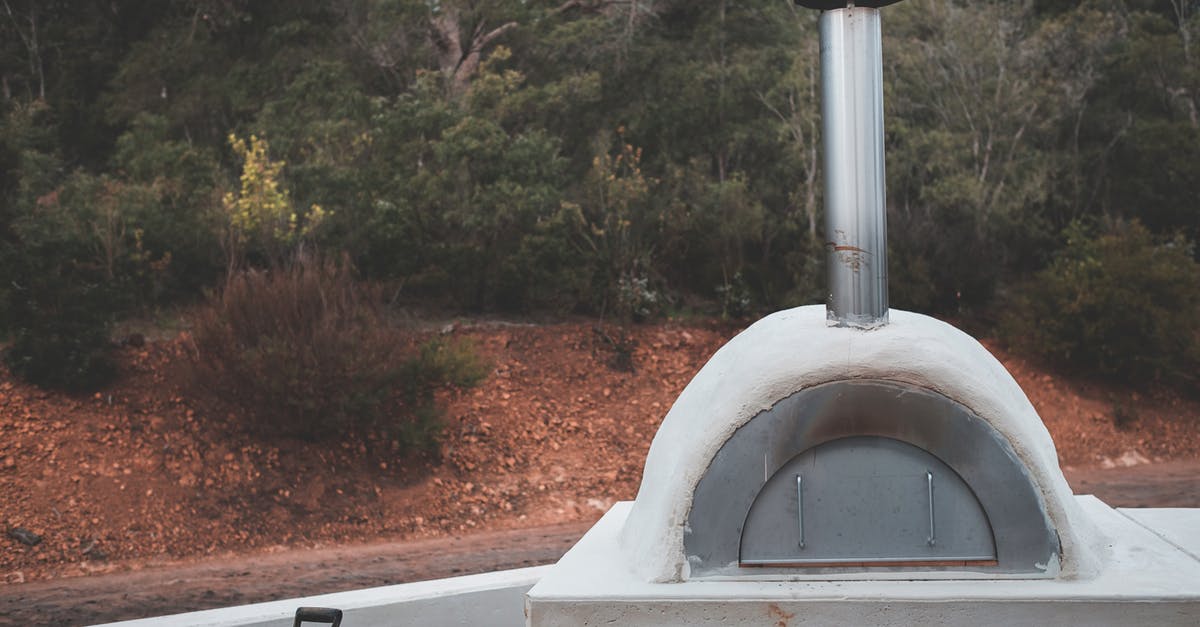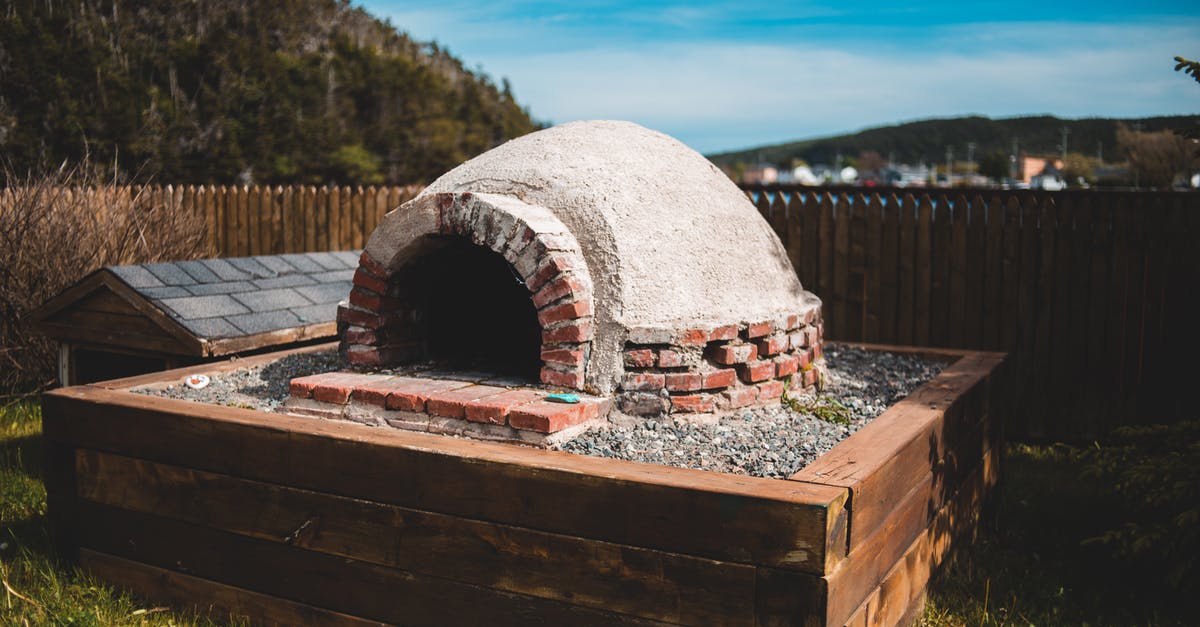Why does aluminum foil on a pizza stone ruin the pizza?

I have a pizza stone and I have a problem with burned dough sticking to it. So I tried to use aluminum foil on the stone for easy cleanup. I wrapped the stone as tightly as I could with the foil and then used it according to the instructions.
The foil ruined the pizzas, instead of getting a burned crispy bottom I got uncooked dough on the bottom with the top cooked. I first thought that this was because the foil wasn't perfectly tight and the air cushion between the stone and foil acted as an insulator. So I removed the wrapped foil, and used instead a loose sheet of foil to allow the air to escape. But this didn't help. When I then removed the foil entirely and used parchment paper instead everything worked fine (a loose sheet of parchment, like the loose sheet of foil from the 2nd attempt).
Why does the foil ruin the effect of the pizza stone, but works excellent in a press toaster?
Best Answer
To understand what's happening here, we should first have a look at what a pizza stone does.
A pizza stone is made from a semi- permeable material with a high thermal capacity, or, plainly put, can store heat and soak up humidity. This means it ensures constant heat at the bottom, plus it buffers the wetness of the dough, giving your pizza a crisp, yet fluffy bottom.
This is why your foil causes the problem. Where the stone can absorb water (and steam), the foil is watertight. Which, as you noticed, can mean a soggy bottom - the humidity from the dough and sauce has nowhere to go on the underside.
Unlike the foil, the parchment is not completely watertight (especially not "steam-tight"), so the stone can still do its job.
If you have trouble with sticky pizza and like easier cleanup, parchment is the way to go. Alternatively, a generous dose of (coarse) flour, semolina or corn flour can help a lot. And don't worry if your stone gets a few stains, there is no need to scrub and clean it every time, just give it a quick wipe once it's dry again. From time to time, you can also burn off residue, if it bothers you.
A press toaster has a different working principle: Its plates are smooth and you are roasting your food only for a comparatively short time. And if you looked closely, you might have noticed a lot of steam either during toasting, but especially when opening it. So the foil has roughly the same properties as the toaster plates, hence you'll get the same result with or without it.
Pictures about "Why does aluminum foil on a pizza stone ruin the pizza?"



Quick Answer about "Why does aluminum foil on a pizza stone ruin the pizza?"
The stone itself is not a good heat conductor so it cannot transfer the heat to the dough by conduction very well. With foil between dough and stone, radiation is almost gone. That's why the underside isn't cooked. There is no good heat transfer between stone and the bottom side of dough.Is it OK to put foil on a pizza stone?
Foil is not recommended to be used with a pizza stone because it does not allow the moisture to be drawn away from the pizza as it cooks. It effectively steams the pizza from below, as the water has nowhere to go apart from upwards. The foil is also a good reflector, so it will reflect the heat away from the stone.Can you ruin a pizza stone?
In general, you should not need to clean your pizza stone on a regular basis, as cooking pizza on it will season it. However, if you do need to clean it, be sure to do it correctly. Some methods, like soaking or using soap and water can ruin your stone forever.How do you get a crispy crust on a pizza stone?
For best results and for a crispy crust, pre-heat your Pizza Stone in the oven at 240\xb0C / 475\xb0F / Gas Mark 9 for 10 minutes. Do not flour the Pizza Stone (as the flour might burn) and place it on the lowest shelf of the oven. During this time, sprinkle flour or very fine couscous over your work surface.What do you put on a pizza stone to keep it from sticking?
The main reason you sprinkle cornmeal or flour onto the bottom of your pizza tray or pizza stone is so that it will stick to the bottom of the pizza dough. This way when it cooks it won't stick to the pan.15 Mistakes to Avoid When Making Pizza at Home 🍕
More answers regarding why does aluminum foil on a pizza stone ruin the pizza?
Answer 2
Stephie's point about the stone's capability to disperse humidity from the dough is probably the most important. Additionally, I'd suspect that the foil prevents the stone from getting up to sufficient temperature during pre-heating: aluminium is a good reflector, not only of visible light but also of thermal radiation. So by wrapping the stone in foil, you lose much of the heat transfer from the top of the oven to the stone. The stone has a considerable heat capacity. It will still reach the temperature of the rest of the oven eventually, but only after you've left in in for a long time.
Answer 3
If it's permeability then baking steel will never work. I tried steel plates and they are awesome, with or without foil. There are three types of heat transfer: conduction, convection and radiation. Between stone and dough there isn't enough air so the focus here should be conduction and radiation. The stone itself is not a good heat conductor so it cannot transfer the heat to the dough by conduction very well. With foil between dough and stone, radiation is almost gone. That's why the underside isn't cooked. There is no good heat transfer between stone and the bottom side of dough. Parchment paper doesn't block radiation as much as foil, therefore the dough can be cooked by radiation heat from the stone. Steel is excellent heat conductor compared to stone. Even with foils that block radiation it can still cook the dough by conduction.
Sources: Stack Exchange - This article follows the attribution requirements of Stack Exchange and is licensed under CC BY-SA 3.0.
Images: Armin Rimoldi, Armin Rimoldi, Lachlan Ross, Erik Mclean
